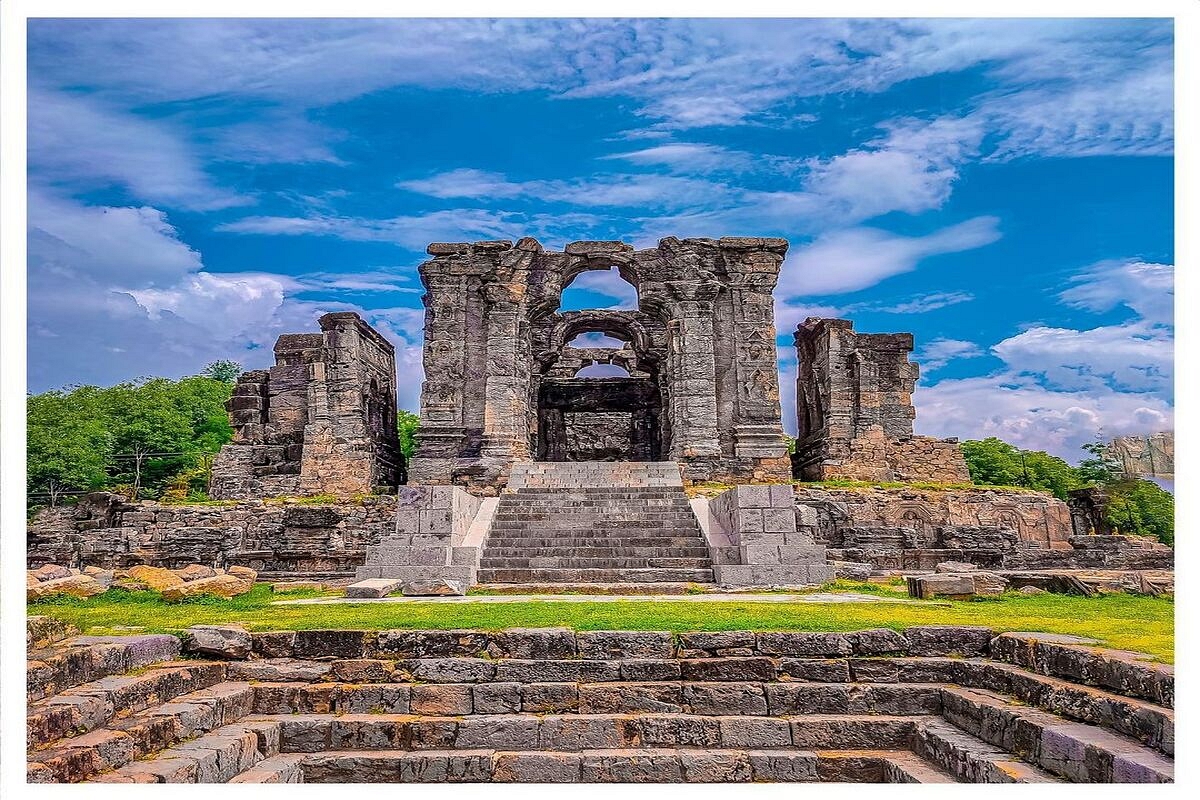Infrastructure
Lost Wonder Of Kashmir: 1200-Year-Old Martand Sun Temple Set For Glorious Restoration

The structure is constructed of limestone, and the entire complex has been built on top of a plateau. (Facebook)
Nestled amidst the picturesque vistas of Kashmir's Anantnag region, the Martand Sun Temple, an architectural marvel from the 8th century, is poised to undergo restoration under the auspices of the Jammu and Kashmir government.
Yesterday (1 April) The J&K government convened a high-level meeting at the Civil Secretariat in Jammu to finalise measures for safeguarding the temple.
Chaired by the Principal Secretary, the meeting will also be attended by officials from the Department of Culture, the Director of Archives, Archaeology and Museums (J-K), and the superintendent of Archaeologist (incharge) of the Archaeological Survey of India (ASI) in the Srinagar circle.
Tragically, the temple endured periods of turmoil and devastation, including its reported destruction on the orders of Sultan Sikandar Shah Miri. It weathered further attacks, notably during the tumultuous years of militancy in Kashmir from 1988 to 1990.
Despite the challenges it faced, the Martand Sun Temple remained a sacred destination for thousands of pilgrims who flock to its hallowed grounds each year, reports Mint.
Interestingly, In a ceremony preceding the Ayodhya temple consecration rites, conducted in January 2024, a revered 'Kalash' from Ayodhya found its solemn place within the sacred precincts of the Ram Temple, nestled within the Martand Sun Temple compound. The installation of this auspicious 'Kalash' was witnessed by fervent devotees.
Martand Sun Temple
The Martand Sun Temple, also known as Pandou Laidan, stands as a testament to India's rich cultural heritage and spiritual legacy. It was constructed under the patronage of Lalitaditya Muktapida, the third ruler of the Karkota Dynasty.
The structure is constructed of limestone, and the entire complex has been built on top of a plateau.
With a remarkable blend of Kashmiri, Gandharan, Gupta, and Chinese architectural styles, Martand Sun Temple exemplifies the fusion of diverse cultural influences.
This is visible in the use of stone pillars, columns, trefoil doorways and the use of rectangles, triangles, and pediments, the latter being a common Baroque design element.
Its grand design features a courtyard housing the central shrine, surrounded by 84 smaller shrines. Spanning 220 feet in length and 142 feet in width, the temple also integrates a pre-existing smaller temple within its layout.
In recognition of its historical and architectural significance, the temple is listed among the centrally protected monuments under the name Kartanda (Sun Temple).
As the J&K government embarks on the journey to revive this architectural gem, anticipation mounts, heralding a new chapter in the temple's storied history. The impending restoration holds promise not only for preserving tangible heritage but also for revitalising a cherished symbol of spiritual and cultural legacy for generations to come.
Support Swarajya's 50 Ground Reports Project & Sponsor A Story
Every general election Swarajya does a 50 ground reports project.
Aimed only at serious readers and those who appreciate the nuances of political undercurrents, the project provides a sense of India's electoral landscape. As you know, these reports are produced after considerable investment of travel, time and effort on the ground.
This time too we've kicked off the project in style and have covered over 30 constituencies already. If you're someone who appreciates such work and have enjoyed our coverage please consider sponsoring a ground report for just Rs 2999 to Rs 19,999 - it goes a long way in helping us produce more quality reportage.
You can also back this project by becoming a subscriber for as little as Rs 999 - so do click on this links and choose a plan that suits you and back us.
Click below to contribute.
Latest